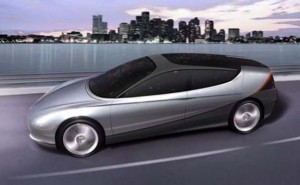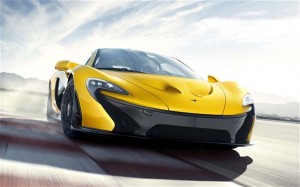They were one of the world’s first automotive options and remain one of the most critical among the safety gear on even the most modern automobiles. But until recently, little had changed in over a century for the humble windshield wiper.
Oh, perhaps that’s not entirely true. Over the decades, they’ve gotten bigger. Manufacturers migrated from mechanical, hand-operated wipers to electric drive, more recently making multi-speed and intermittent wipers all but ubiquitous.
But several manufacturers are looking for truly high-tech alternatives that could make tomorrow’s wipers some of the most sophisticated devices on your car.
Mercedes-Benz took a big step forward when it introduced its new Magic Vision Control system on the latest version of the SL sports car. That system eliminates the normally messy windshield wiper sprayer, fluid instead flowing out of the wipers directly onto the windshield.

The Pininfarina Hidra uses specially coated glass -- and aerodynamics -- to keep water, dirt off the windshield.
But even the best modern wiper designs can reach their limits in a heavy rain or snowstorm. They can simply be overwhelmed, smearing rather than clearing, the windshield. And there’s always that annoying flip-flop sound that leads many motorists to squint through wet windows until there’s no alternative but flipping the wipers on.
(Fuel-saving Stop/Start quickly becoming an industry norm. Click Here for the story.)
Could there be an alternative way to keep rain, snow – even mud and bugs – off your windshield? Apparently, the Air Force has already come up with one that uses high-frequency sound waves to create, in effect, a force field that doesn’t let anything adhere to the glass.
“It took a lot of effort to get this out of a source in the military. I asked why you don’t see wipers on some aircraft on when they are coming in at very low levels for landing,” Frank Stephenson, the head of design for Britain’s McLaren, told London’s Sunday Times. “I was told that it’s not a coating on the surface but a high-frequency electronic system that never fails and is constantly active. Nothing will attach to the windscreen.” One ultrasonics professor said he thinks this means attaching “an ultrasonic transducer in the corner of the windscreen.”
The approach, if feasible on the road, as well as in the air, would likely be expensive at first, though the cost could come down if it can translate into a mass market concept. It potentially would eliminate not just the windshield wiper but the mileage-robbing aerodynamic drag today’s devices cause. And there’d be one less stalk on your steering wheel to manage.
(Michigan approves testing autonomous vehicles on public roads. Click Here for details.)
But while McLaren is working on its own ultrasonic wiper system, the Italian design house Pininfarina is taking another approach with its wiper-less Hidra concept vehicle. The coupe-like concept vehicle relies on both aerodynamic design to minimize what actually comes close to the windshield – and a special coating designed to keep things from sticking if they do come into contact with the glass.
The outer layer of the coating has what scientists called hydrophobic properties. It actually repels water. A second, nano layer will “push” dirt off to the sides, while a third layer essentially helps clean off grime. An additional, electrically conductive layer, provides the power needed to make it all work.
Pininfarina designers claim the technology behind the Hidra wiper-less windshield could prove reasonably cost-competitive and could wind up in production in a few year, marking the most significant improvement in rain gear since the first hand-operated wipers were introduced more than a century ago.

